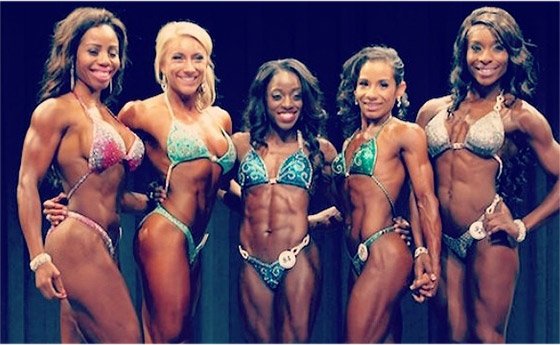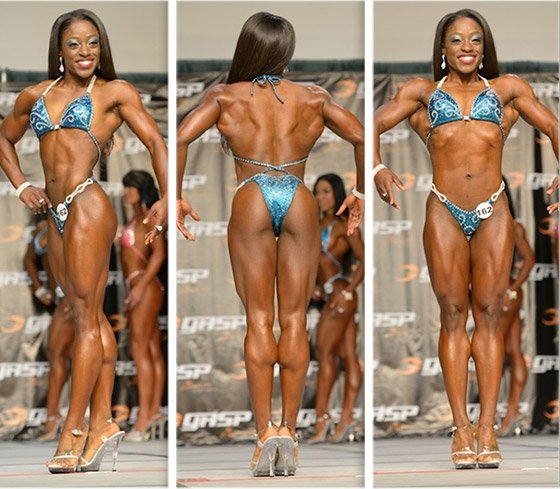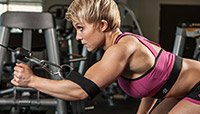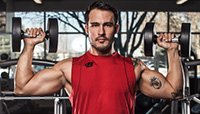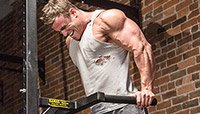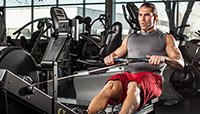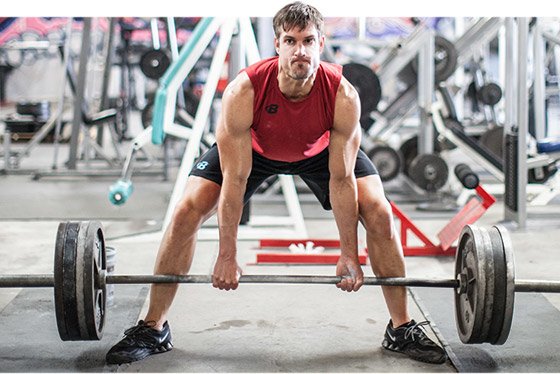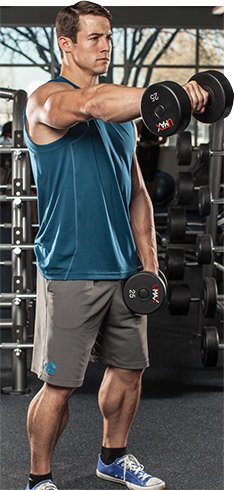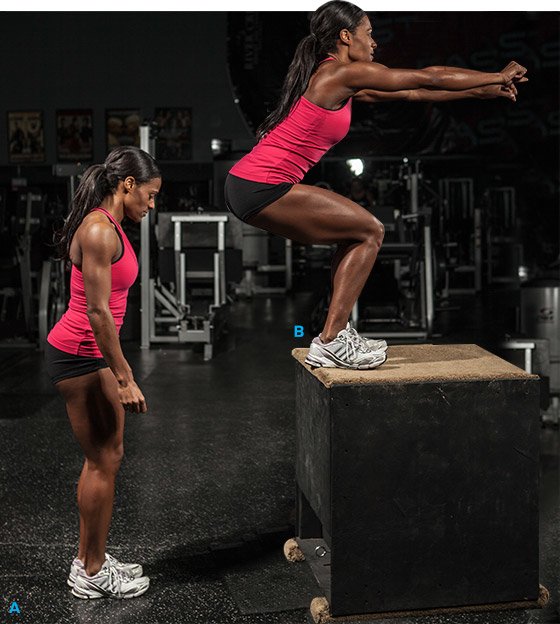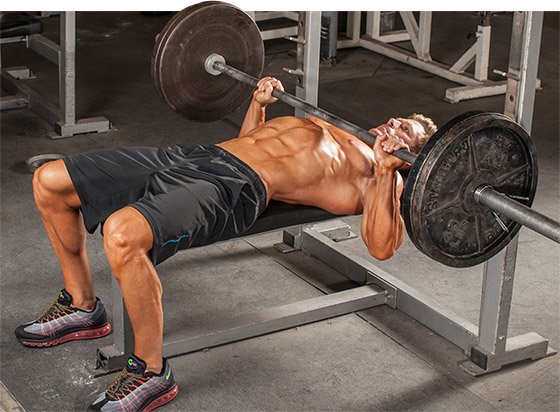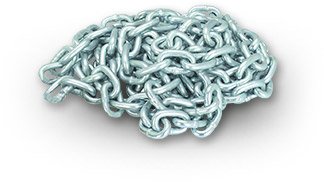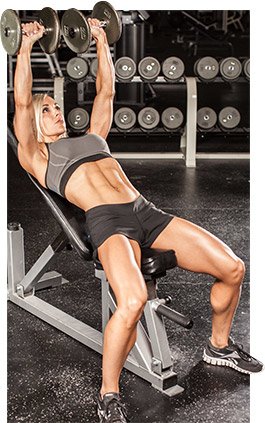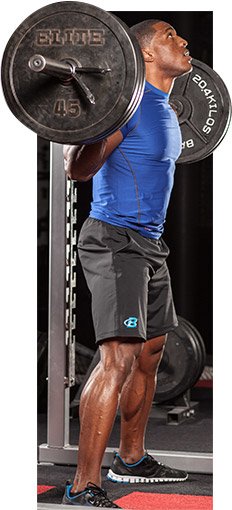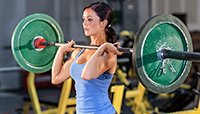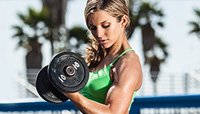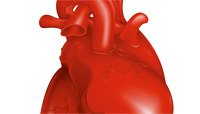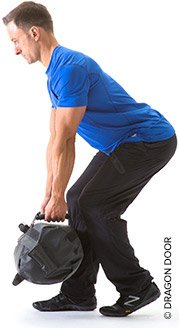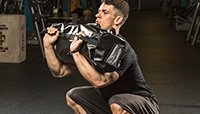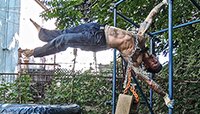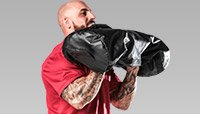![Celebrity Photos: June 2014]()
Lady Gaga rocked some 80′s style while leaving her apartment building in New York City on June 6.
![Celebrity Photos: June 2014]()
Eva Longoria and Felicity Huffman had a little “Desperate Housewives” reunion at the AFI Life Achievement Award: A Tribute To Jane Fonda at the Dolby Theatre in Hollywood, California on June 5.
![Celebrity Photos: June 2014]()
Lindsay Lohan was seen at Chiltern Firehouse in London on June 5.
![Celebrity Photos: June 2014]()
Scott Disick attended the 2014 FIFA World Cup McDonald’s launch party at Pillars 38 on June 5 in New York City.
![Celebrity Photos: June 2014]()
Lena Dunham was seen rocking a “No Comment” sweater while out and about in New York City on June 5.
![Celebrity Photos: June 2014]()
Hilary Duff was all smiles as she ran errands on June 5 in Beverly Hills, California.
![Celebrity Photos: June 2014]()
Channing Tatum has some fun at the “22 Jump Street” premiere at AMC Lincoln Square Theater on June 4 in New York City.
![Celebrity Photos: June 2014]()
Nicole Kidman and Keith Urban attended the 2014 CMT Music Awards at the Bridgestone Arena on June 4 in Nashville, Tennessee.
![Celebrity Photos: June 2014]()
Carrie Underwood attended the 2014 CMT Music Awards at the Bridgestone Arena on June 4 in Nashville, Tennessee.
![Celebrity Photos: June 2014]()
Kendall and Kylie Jenner were seen stepping out in New York City on June 4.
![Celebrity Photos: June 2014]()
Bradley Cooper got whipped into shape by military personal while filming scenes for his upcoming movie “American Sniper” in Los Angeles, California on June 4.
![Celebrity Photos: June 2014]()
Sarah Jessica Parker went for a walk on June 4 in New York City.
![Celebrity Photos: June 2014]()
Emma Roberts and Evan Peters enjoyed a romantic stroll on the beach together while vacationing in Maui, Hawaii on June 3.
![Celebrity Photos: June 2014]()
Kim Kardashian stopped by Craig’s in West Hollywood, California to have lunch with her mom Kris Jenner on June 3.
![Celebrity Photos: June 2014]()
Taylor Schilling attended the Glamour Women of the Year Awards at Berkeley Square Gardens on June 3 in London, England.
![Celebrity Photos: June 2014]()
Miranda Lambert stopped by ABC studios for an appearance on “Good Morning America” in New York Cit on June 3.
![Celebrity Photos: June 2014]()
Angelina Jolie attended the “Maleficent” photo call at The Bund on June 3 in Shanghai, China.
![Celebrity Photos: June 2014]()
John Mayer enjoyed dinner out at Madeo Restaurant on June 2 in West Hollywood, California.
![Celebrity Photos: June 2014]()
Blake Lively left her hotel with designer Michael Kors and headed to the 2014 CDFA Awards on June 2 in New York City.
![Celebrity Photos: June 2014]()
Gwen Stefani spotted leaving a skin care clinic while out and about in Beverly Hills, California on June 2.
![Celebrity Photos: June 2014]()
Katie Holmes spotted picking up Jergens Natural Glow Daily Moisturizer in New York City on June 2.
![Celebrity Photos: June 2014]()
Pete Wentz took a test drive of the new Mario Kart 8 for Wii U in Los Angeles, California on June 2.
![Celebrity Photos: June 2014]()
Halle Berry attended the Huading Film Awards on June 1 at Ricardo Montalban Theatre in Los Angeles, California.
![Celebrity Photos: June 2014]()
Kim Kardashian was seen at LAX on June 1 in Los Angeles, California.
![Celebrity Photos: June 2014]()
Shailene Woodley was seen leaving the Bowery Hotel in New York City on June 1.
![Celebrity Photos: June 2014]()
Marion Cotillard spotted out and about with a friend in New York City on June 1.
![Celebrity Photos: May 2014]()
Khloe Kardashian chatted away on her cell phone as she arrived on a red eye flight at JFK airport in New York on May 31.
![Celebrity Photos: May 2014]()
Naomi Watts headed to the gym for a morning workout on May 30 in Brentwood, California
![Celebrity Photos: May 2014]()
Jane Lynch signed copies of her book “Marlene, Marlene, Queen of Mean” at the 2014 Bookexpo America at The Jacob K. Javits Convention Center on May 29 in New York City.
![Celebrity Photos: May 2014]()
Taylor Schilling, Jason Biggs and Laura Prepon attended a photo call to launch season 2 of Netflix exclusive series “Orange Is The New Black” on May 29 in London.
![Celebrity Photos: May 2014]()
Peter Facinelli and Jaimie Alexander shared a kiss after their work out at a gym in West Hollywood, California on May 29.
![Celebrity Photos: May 2014]()
Mariah Carey at the 2014 Fresh Air Fund Honoring Our American Hero at Pier Sixty in New York City on May 29.
![Celebrity Photos: May 2014]()
Farrah Abraham spotted posing for cameras in New York City on May 29.
![Celebrity Photos: May 2014]()
Prince William and Kate Middleton visited Strathearn Community Campus in Crieff, Scotland on May 29.
![Celebrity Photos: May 2014]()
“The Bachelorette” Season 1 couple Trista and Ryan Sutter stopped to pose for the cameras while out and about in New York City on May 29.
![Celebrity Photos: May 2014]()
Angelina Jolie and Brad Pitt at the Los Angeles premiere of “Maleficent” at the El Capitan Theatre in Hollywood, California on May 28.
![Celebrity Photos: May 2014]()
Chris Martin and his band Coldplay perform live at the Casino de Paris on May 28 in Paris.
![Celebrity Photos: May 2014]()
Hilary Duff stopped by a nail salon in Los Angeles, California on May 28.
![Celebrity Photos: May 2014]()
Scott Disick spotted out and about with a friend in New York City on May 28.
![Celebrity Photos: May 2014]()
Emily Blunt attended the premiere of “Edge Of Tomorrow” on May 28 in London.
![Celebrity Photos: May 2014]()
Nina Dobrev wowed at the World Music Awards 2014 at Sporting Monte-Carlo on May 27.
![Celebrity Photos: May 2014]()
Kristen Stewart departed on a flight at LAX airport in Los Angeles, California with her bodyguard on May 27.
![Celebrity Photos: May 2014]()
Amanda Seyfried, Charlize Theron and Seth MacFarlane attended a photo call to promote “A Million Ways To Die In The West” on May 27 in London, England.
![Celebrity Photos: May 2014]()
Jennifer Garner met a friend for lunch at Larchmont Bungalow in Los Angeles, California on May 27.
![Celebrity Photos: May 2014]()
Tom Cruise attended “Edge Of Tomorrow” photocall at Terrazza Civita on May 27 in Rome, Italy.
![Celebrity Photos: May 2014]()
Kaley Cuoco and her husband Ryan Sweeting attended Joel Silver’s Annual Memorial Day Party at his home in Malibu, California on May 26.
![Celebrity Photos: May 2014]()
Kris Jenner and baby North West left Florence Airport after Kim Kardashian And Kanye West’s wedding on May 25 in Florence, Italy.
![Celebrity Photos: May 2014]()
Emma Watson, in a cap and gown, attending Brown University’s 2014 Graduation Ceremony in Providence, Rhode Island on May 25.
![Celebrity Photos: May 2014]()
Eva Longoria had a busy morning in Los Angeles, California on May 25.
![Celebrity Photos: May 2014]()
Iggy Azalea arrived at The Bank nightclub at the Bellagio on May 24 in Las Vegas, Nevada.
![Celebrity Photos: May 2014]()
Supermodel Hilary Rhoda and her fiance former “DWTS” contestant Sean Avery celebrated Memorial Day with Tequila Don Julio cocktails from the Airstream speakeasy in the Hampton’s on May 24.
![Celebrity Photos: May 2014]()
Hilary Duff dined out at Craig’s restaurant on May 24 in West Hollywood, California.
![Celebrity News: May 2014]()
Kim Kardashian and Kanye West got married on May 24 in Florence, Italy.
![Celebrity Photos: May 2014]()
Uma Thurman attended the “Clouds Of Sils Maria” premiere at the 67th Annual Cannes Film Festival on May 23 in Cannes, France.
![Celebrity Photos: May 2014]()
Kristen Stewart, Juliette Binoche and Chloe Grace Moretz attended the “Clouds Of Sils Maria” premiere during the 67th Annual Cannes Film Festival on May 23.
![Celebrity Photos: May 2014]()
Kanye West, Kim Kardashian and Kris Jenner were spotted leaving an apartment on May 23 in Paris, France.
![Celebrity Photos: May 2014]()
Chris Martin arrived at LAX Airport to catch a flight out of town on May 22 in Los Angeles, California.
![Celebrity Photos: May 2014]()
Lea Michele signed copies of her book “Brunette Ambition” at Barnes & Noble Book Store at the Grove in Los Angeles, California on May 22.
![Celebrity Photos: May 2014]()
Jude Law at the Peace One Day Monaco Gala in support of Peace One Day’s Education work in the Democratic Republic of Congo and Great Lakes region in Monaco on May 22.
![Celebrity Photos: May 2014]()
Pharrell Williams visited the ITV studios on May 22 in London, England.
![Celebrity Photos: May 2014]()
Drew Barrymore and Will Kopelman arrived at the Los Angeles premiere of “Blended” at TCL Chinese Theatre on May 21 in Hollywood, California.
![Celebrity Photos: May 2014]()
Jennifer Lopez wowed at the “American Idol” finale at the Nokia Theatre LA Live in Los Angeles, California on May 21.
![Celebrity Photos: May 2014]()
Emma Stone and Andrew Garfield went out for a coffee in New York City on May 21.
![Celebrity Photos: May 2014]()
Kim Kardashian and her family dined out at Costes restaurant on May 21 in Paris, France.
![Celebrity Photos: May 2014]()
Rosie Huntington-Whiteley attended the “The Search” premiere at the 67th Annual Cannes Film Festival on May 21.
![Celebrity Photos: May 2014]()
Heidi Klum and her boyfriend Vito Schnabel arrived in Nice, France for the 67th Annual Cannes Film Festival on May 21.
![Celebrity Photos: May 2014]()
Ali Larter shopped at Marshalls in Los Angeles, California on May 21.
![Celebrity Photos: May 2014]()
Tom Cruise was spotted on a night out at the Chiltern Firehouse in London, UK on May 20.
![Celebrity Photos: May 2014]()
Cheryl Burke at the ‘Dancing With The Stars” Season 18 Official Wrap Party at the Sofitel Hotel in Los Angeles, California on May 20.
![Celebrity Photos: May 2014]()
Jessica Alba was all smiles while stopping by her office in Santa Monica, California on May 20.
![Celebrity Photos: May 2014]()
Christina Hendricks and Ryan Gosling hugged it out at the “Lost River” photocall at the 67th Annual Cannes Film Festival on May 20.
![Celebrity Photos: May 2014]()
Naomi Watts started her morning off with a workout at the gym on May 20 in Brentwood, California.
![Celebrity Photos: May 2014]()
Katie Holmes glowedin a floral Desigual dress at an NYC studio on May 20.
![Celebrity Photos: May 2014]()
Kate Hudson wore short shorts while out and about in New York City on May 19.
![Celebrity Photos: May 2014]()
Drew Barrymore and Adam Sandler cozied up at the premiere of “Blended” at the CineStar Cinema in Berlin, Germany on May 19.
![Celebrity Photos: May 2014]()
Kim Kardashian and her fiance Kanye West spent the day shopping at luxury brands Balenciaga, Versace and Colette on May 19 in Paris, France.
![Celebrity Photos: May 2014]()
Jessica Chastain attended the “Foxcatcher” premiere during the 67th Annual Cannes Film Festival on May 19 in Cannes, France.
![Celebrity Photos: May 2014]()
Andi Dorfman, the new Bachelorette, dropped by ABC Studios for an appearance on “Good Morning America” on May 19.
![Celebrity Photos: May 2014]()
Jennifer Lopez in the 2014 Billboard Music Awards Press Room held at the MGM Grand Garden in Las Vegas, Nevada on May 18.
![Celebrity Photos: May 2014]()
Jennifer Lawrence attended Lionsgate’s “The Hunger Games: Mockingjay Part 1′ party at a private villa on May 17, 2014 in Cannes, France.
![Celebrity Photos: May 2014]()
Matthew McConaughey and his family participated in Drew Brees’, The Brees Dream Foundation charity fundraiser mimicking the Amazing Race in New Orleans, Louisiana on May 17.
![Celebrity Photos: May 2014]()
Naomi Watts spotted at the beach wearing Skechers GOwalk 2, while taking a break from the Cannes Film Festival on May 17.
![Celebrity Photos: May 2014]()
Kim Kardashian landed on a flight at LAX Airport on May 15 in Los Angeles, California.
![Celebrity Photos: May 2014]()
Charlize Theron and Sean Penn attended the “A Millions Ways To Die In The West” premiere held at the The Regency Village Theater in Westwood, California on May 15.
![Celebrity Photos: May 2014]()
Jennifer Lopez arrived on the set of “American Idol” in Hollywood, California on May 15.
![Celebrity Photos: May 2014]()
Taylor Swift stopped by a gym for a workout in New York City on May 15.
![Celebrity Photos: May 2014]()
Calvin Klein Collection and euphoria Calvin Klein celebrated Women in Film on May 15 during the 67th Cannes Film Festival with Rooney Mara, Naomi Watts, Lupita Nyong’o and Julianne Moore.
![Celebrity Photos: May 2014]()
Blake Lively attended the “Mr.Turner” premiere at the 67th Annual Cannes Film Festival on May 15.
![Celebrity Photos: May 2014]()
Lady Gaga posed for pictures with fans as she and her boyfriend Taylor Kinney left their apartment building in New York City on May 15.
![Celebrity Photos: May 2014]()
Amal Alamuddin, fiancee of George Clooney, grabbed a taxi to the American Embassy in London, England on May 15.
![Celebrity Photos: May 2014]()
Khloe Kardashian departed on a flight at LAX in Los Angeles, California on May 14.
![Celebrity Photos: May 2014]()
Katie Holmes spotted at the Winter WONKA™-land Pop-Up in downtown NYC on May 15.
![Celebrity Photos: May 2014]()
Kendall Jenner attended the opening ceremony and “Grace of Monaco” premiere at the 67th Annual Cannes Film Festival on May 14.
![Celebrity Photos: May 2014]()
Blake Lively attended the opening ceremony and “Grace of Monaco” premiere at the 67th Annual Cannes Film Festival on May 14.
![Celebrity Photos: May 2014]()
James Franco stopped by NBC Studios for an appearance on “The Today Show” on May 14.
![Celebrity Photos: May 2014]()
Peter Dinklage was enthusiastic at the “X-Men: Days Of Future Past” premiere in Beijing, China on May 13.
![Celebrity Photos: May 2014]()
Cameron Diaz enjoyed a hike with a friend at TreePeople Park in Beverly Hills, California on May 13.
![Celebrity Photos: May 2014]()
Nicole Kidman signed autographs after appearing on Le Grand Journal in Cannes, France on May 13.
![Celebrity Photos: May 2014]()
George Clooney’s fiancee Amal Alamuddin flashed her engagement ring in London on May 13.
![Celebrity Photos: May 2014]()
Jennifer Lopez spotted out and about in New York City on May 12.
![Celebrity Photos: May 2014]()
Julia Roberts attended the New York premiere of “The Normal Heart’” at Ziegfeld Theater on May 12.
![Celebrity Photos: May 2014]()
Sir Ian McKellen attended the UK Premiere of “X-Men: Days of Future Past” at Odeon Leicester Square on May 12.
![Celebrity Photos: May 2014]()
Diane Keaton at the launch of the L`Oreal Paris `It`s That Worth It` melanoma awareness campaign in NYC on May 12.
![Celebrity Photos: May 2014]()
Angelina Jolie stepped out of her car on the Upper East Side on May 12 in New York City.
![Celebrity Photos: May 2014]()
Pregnant singer Christina Aguilera and fiance Matthew Rutler were spotted out for coffee on Mother’s Day with her son Max in Los Angeles, California on May 11.
![Celebrity Photos: May 2014]()
Jennifer Lawrence wowed at the New York premiere “X-Men: Days Of Future Past” at the Jacob Javits Center in New York City on May 10.
![Celebrity Photos: May 2014]()
Jenna Dewan spotted in a little black dress while leaving her hotel on May 9 in New York City.
![Celebrity Photos: May 2014]()
Chrissy Teigen and Curtis Granderson attended the The New National Campaign “Pledge. Drink. Win,” encouraging kids to drink more water. Photo taken at MLB Fan Cave on May 8 in New York City.
![Celebrity Photos: May 2014]()
Jimmy Kimmel took a break from his hosting duties on May 8 to hang out with Penelope Cruz, who brought the Nespresso VertuoLine coffee to the show.
![Celebrity Photos: May 2014]()
“Game of Thrones” star Maisie Williams arrived at the BBC Radio 1 studios in London on May 8.
![Celebrity News: May 2014]()
Lucy Hale looked gym-ready in LA on May 8.
![Celebrity Photos: May 2014]()
Jennifer Lopez was snapped backstage at “American Idol” looking red hot on May 7.
![Celebrity News: May 2014]()
Mariah Carey arrived to the “Late Show with David Letterman” in NYC on May 7.
![Celebrity Photos: May 2014]()
Supermodel Gisele Bundchen attended the 2014 Rainforest Alliance Gala at Museum of Natural History in NYC on May 7.
![Celebrity Photos: May 2014]()
Jake Gyllenhaal accompanied his reported girlfriend Alyssa Miller while she walked her dog in New York City on May 7.
![Celebrity Photos: May 2014]()
Blake Lively stepped out of a downtown New York City hotel wearing a shiny flowered trench coat on May 7.
![Celebrity Photos: May 2014]()
Benedict Cumberbatch and Dakota Johnson were spotted out and about in New York City on May 6.
![Celebrity Photos: May 2014]()
Jennifer Aniston photographed on the set of “Cake” in Sylmar, California on May 6.
![Celebrity Photos: May 2014]()
Sean Penn and Charlize Theron were spotted holding hands while out and about in New York City on May 6.
![Celebrity Photos: May 2014]()
Elle Fanning and Angelina Jolie attend a photocall for the film “Maleficent” at Hotel Bristol on May 6 in Paris.
![Celebrity Photos: May 2014]()
Jessica Biel checked her messages while wearing an Atlas Bangle and Pendant by Tiffany & Co. while in Copenhagen on May 6.
![Celebrity Photos: May 2014]()
Sarah Jessica Parker attended the “Charles James: Beyond Fashion” Costume Institute Gala at the Metropolitan Museum of Art in New York City on May 5.
![Celebrity Photos: May 2014]()
Emma Stone attended “Charles James: Beyond Fashion” Costume Institute Gala at the Metropolitan Museum of Art in New York City on May 5.
![Celebrity Photos: May 2014]()
Blake Lively and Ryan Reynolds attended “Charles James: Beyond Fashion” Costume Institute Gala at the Metropolitan Museum of Art in New York City on May 5.
![Celebrity Photos: May 2014]()
Taylor Swift was seen stopping by a gym in New York City on May 4.
![Celebrity Photos: May 2014]()
Jessica Simpson and Eric Johnson arrived on a flight at LAX airport in Los Angeles, Calif., on May 4.
![Celebrity Photos: May 2014]()
Lea Michele attended the “Legends of OZ: Dorothy’s Return” premiere held at the The Regency Village Theater in Westwood, Calif., on May 3.
![Celebrity Photos: May 2014]()
Ellen Page was spotted leaving the gym in West Hollywood, Calif., after a workout on May 2.
![Celebrity Photos: May 2014]()
Jared Leto attended the 2014 iHeartRadio Music Awards held at The Shrine Auditorium on May 1 in Los Angeles, Calif.
![Celebrity Photos: May 2014]()
Emma Roberts went grocery shopping at Bristol Farms in West Hollywood, Calif., on May 1.
![Celebrity Photos: May 2014]()
Kate Bosworth rocked a fierce red dress out and about NYC on May 1.
![Celebrity Photos: April 2014]()
Jessica Biel was spotted jetting out of LAX solo on April 30.
![Celebrity Photos: April 30]()
Kim Kardashian and Serena Williams went shopping in Paris on April 30.
![Celebrity Photos: April 2014]()
Sarah Jessica Parker attended the 2014 AOL NewFronts at Duggal Greenhouse in NYC on April 29.
![Celebrity Photos: April 2014]()
Blake Lively filmed a scene for “The Age of Adaline” in Vancouver, Canada on April 28.
![Celebrity Photos: April 2014]()
Brooklyn Decker and Andy Roddick left their shoes at home for TOMS One Day Without Shoes event held to raise awareness about children’s health and education needs.
![Celebrity Photos: April 2014]()
Jonah Hill had some fun with fro-yo in NYC on April 28.
![Celebrity Photos: April 2014]()
Tori Spelling headed out of her LA home on April 28, amid reports that her husband Dean McDermott cheated on her which landed her in the hospital for nearly a week.
![Celebrity Photos: April 2014]()
Rihanna attended Roc Nation Sports’ 1-year anniversary luncheon at TAO in NYC on April 28.
![Celebrity Photos: April 2014]()
Michael Douglas and Catherine Zeta-Jones attended the 41st Annual Chaplin Award Gala at Avery Fisher Hall at Lincoln Center, NYC, on April 28.
![Celebrity Photos: April 2014]()
Naomi Watts did some spring shopping at the farmers market in Brentwood, Calif. on April 27.
![Celebrity Photos: April 2014]()
Pregnant Kendra Wilkinson attended her son’s soccer game at Woodland Hills, Calif., on April 27.
![Celebrity Photos: April 2014]()
Dianna Agron and Carey Mulligan shared a laugh while strolling through West Hollywood on April 26.
![Celebrity Photos: April 2014]()
Gwen Stefani and her family boarded their private jet in California on April 26.
![Celebrity Photos: April 2014]()
Emma Stone sizzled at “The Amazing Spider-Man 2″ premiere at the Ziegfeld Theater in NYC on April 24.
![Celebrity Photos: April 2014]()
Kate Upton, Cameron Diaz and Leslie Mann attended The Cinema Society & Bobbi Brown with InStyle screening of “The Other Woman” at The Paley Center for Media in NYC on April 24.
![Celebrity Photos: April 2014]()
Khloe Kardashian did some shopping with her mother Kris in West Hollywood on April 24.
![Celebrity Photos: April 2014]()
Newlywed Jodie Foster grabbed a smoothie in LA on April 24.
![Celebrity Photos: April 2014]()
Emma Stone stopped by the “Good Morning America” studios in NYC on April 24, with her “The Amazing Spider-Man 2″ co-stars Andrew Garfield and Jamie Foxx.
![Celebrity Photos: April 2014]()
Tori Spelling’s husband Dean McDermott had a heated exchange with a paparazzo in LA on April 23
![Celebrity Photos: April 2014]()
Jessica Alba landed in NYC on April 23.
![Celebrity Photos: April 2014]()
Rumer Willis attended the 5th Annual Elle Women in Music Celebration presented by CUSP by Neiman Marcus in Hollywood, Calif. Hosted by Elle Editor-in-Chief Robbie Myers, the April 22 event featured performances by Sarah McLachlan, Angel Haze and Betty Who.
![Celebrity Photos: April 2014]()
Eddie Murphy’s daughters Shayne (left) and Bria Murphy attended Elle’s 5th Annual Women in Music concert celebration on April 22 in Hollywood.
![Celebrity Photos: April 2014]()
Jason Sudeikis shared a laugh with Rebecca Hall on set of “Tumbledown” in Boston on April 22.
![Celebrity Photos: April 2014]()
Taylor Swift engaged in some retail therapy in NYC on April 22.
![Celebrity News: April 2014]()
Drew Barrymore gave birth to her second child, a baby girl named Frankie Barrymore Kopelman, on April 22.
![Celebrity Photos: April 2014]()
Cameron Diaz attended the premiere of “The Other Woman” at the Regency Village Theatre in Westwood, Calif., on April 21
![Celebrity Photos: April 2014]()
Katy Perry headed to Jimmy Kimmel’s studio in Hollywood, Calif., on April 21.
![Celebrity Photos: April 2014]()
Sofia Vergara wowed at “Good Morning America” on April 21.
![Celebrity Photos: April 2014]()
Selena Gomez went on a coffee run in Studio City, Calif. on April 21.
![Celebrity Photos: April 2014]()
Busy Philipps and husband Marc Silverstein had some fun at Coachella on April 20.
![Celebrity Photos: April 2014]()
Gwen Stefani headed to her parents’ house on Easter Sunday, April 20, with her husband Gavin Rossdale and three kids, Kingston, Zuma and Apollo.
![Celebrity Photos: April 2014]()
Tia Mowry soaked up some sun in Cabo, Mexico with her husband Cory Hardrict on April 19.
![Celebrity Photos: April 2014]()
Jennifer Lopez and boyfriend Casper Smart had a casual dinner at Madeo in West Hollywood on April 17.
![Celebrity Photos: April 2014]()
Aubrey Plaza, Jason Ritter, Dade Constantine, and Kayla Dobson attended the “About Alex” premiere afterparty during the Tribeca Film Festival at Kutsher’s Tribeca in NYC, April 17.
![Celebrity Photos: April 2014]()
Pregnant singer Christina Aguilera and her fiance Matthew Rutler were photographed out and about in New York City on April 17.
![Celebrity Photos: April 2014]()
Katie Holmes spotted out and about in New York City on April 17.
![Celebrity Photos: April 2014]()
“Downton Abbey” actress Jessica Brown Findlay hopped on a train at Manchester Piccadilly Train Station after her interview on “BBC Breakfast” on April 17 in England.
![Celebrity Photos: April 2014]()
Heather Graham visited NBC Studios for an appearance on “The Today Show” on April 17 in New York City.
![Celebrity Photos: April 2014]()
Justin Bieber and his crew, including Lil Za, were spotted out for dinner at The Grove in Los Angeles, Calif., on April 16.
![Celebrity Photos: April 2014]()
Georgia May Jagger, daughter of Mick Jagger, filmed a commercial for Rimmel London in London, England, on April 15.
![Celebrity Photos: April 2014]()
Halle Berry filmed scenes for her TV series “Extant” in Century City, Calif. on April 15.
![Celebrity Photos: April 2014]()
Lauren Conrad did some shopping in West Hollywood on April 15.
![Celebrity Photos: April 2014]()
Andrew Garfield, Emma Stone, Jamie Foxx and Dane DeHaan posed during a photocall for their film “The Amazing Spider-Man 2″ prior to the German premiere of the film in Berlin on April 15.
![Celebrity Photos: April 2014]()
Kim Kardashian and her fiance Kanye West walked hand-in-hand as they went shopping in Givenchy, Balmain and Lanvin on April 14 in Paris, France.
![Celebrity Photos: April 2014]()
Channing Tatum and Jenna Dewan-Tatum joked around backstage at the 2014 MTV Movie Awards at Nokia Theatre L.A. Live in Los Angeles, Calif., on April 13.
![Celebrity Photos: April 2014]()
Lupita Nyong’o arrived at the 2014 MTV Movie Awards at Nokia Theatre L.A. Live in Los Angeles, Calif., on April 13.
![Celebrity Photos: April 2014]()
Taylor Swift and a friend were spotted out and about in New York City on April 12.
![Celebrity Photos: April 2014]()
Jessica Biel was all smiles as she headed out for an espresso in New York City on April 12.
![Celebrity Photos: April 2014]()
Leonardo DiCaprio stopped by the McDonald’s® and Stingray Desert Coachella Pool Party at the Bootsy Bellows Estate on April 12 to celebrate the launch of McDonald’s® Bacon Clubhouse Burger™ and the 2014 Corvette Stingray.
![Celebrity Photos: April 2014]()
Julianne Hough looked Coachella cool at The Old Navy Oasis in Indio, Calif.m on April 12.
![Celebrity Photos: April 2014]()
Selena Gomez and Kendall and Kylie Jenner at the first weekend of The Coachella Valley Music and Arts Festival on April 11.
![Celebrity Photos: April 2014]()
Emma Stone and Andrew Garfield visited BBC Radio 1 in London on April 9 to promote their new film, “The Amazing Spider-Man 2.”
![Celebrity Photos: April 2014]()
Pregnant Kristin Cavallari was spotted running in West Hollywood on April 9.
![Celebrity Photos: April 2014]()
Danica McKellar left “Dancing with the Stars” practice in Hollywood on April 8.
![Celebrity Photos: April 2014]()
Julianne Moore was pretty in white while out in NYC April 8.
![Celebrity Photos: April 2014]()
Anne Hathaway wrapped herself up in a giant coat while out in NYC on April 8.
![Celebrity Photos: April 2014]()
Lady Gaga struck her usual unique pose outside the Roseland Ballroom on April 7.
![Celebrity News: April 2014]()
British socialite Peaches Geldof died of an “unexplained and sudden” cause on April 7. She was 25.
![Celebrity Photos: April 7]()
“Dancing with the Stars” star Derek Hough took a break from rehearsal on April 7 to snack on the new Ritz crackers.
![Celebrity Photos: April 2014]()
Jamie Lynn Sigler was spotted purchasing a Rembrandt whitening kit at Target in New York on April 7.
![Celebrity Photos: April 2014]()
Faith Hill and Tim McGraw at the 2014 Academy Of Country Music Awards at the MGM Grand Hotel & Casino in Las Vegas, Nevada on April 6.
![Celebrity Photos: April 2014]()
Miranda Lambert and Blake Shelton at the 2014 Academy Of Country Music Awards at the MGM Grand Hotel & Casino in Las Vegas, Nevada on April 6.
![Celebrity Photos: April 2014]()
Carrie Underwood at the 2014 Academy Of Country Music Awards at the MGM Grand Hotel & Casino in Las Vegas, Nevada on April 6.
![Celebrity Photos: April 2014]()
Taylor Swift at the 2014 Academy Of Country Music Awards at the MGM Grand Hotel & Casino in Las Vegas, Nevada on April 6.
![Celebrity Photos: April 2014]()
Cameron Diaz made an appearance on “Wetten, dass..???” TV show on April 5 in Offenburg, Germany.
![Celebrity Photos: April 2014]()
Heidi Klum attended the “America’s Got Talent” red carpet event at Madison Square Garden on April 4 in New York City.
![Celebrity Photos: April 2014]()
Nicole Richie attended Lucky FABB: Fashion and Beauty Blog Conference at the SLS Hotel in Beverly Hills on April 4.
![Celebrity Photos: April 2014]()
Shakira and Usher attended NBC’s “The Voice” red carpet event at The Sayers Club in Hollywood on April 3.
![Celebrity Photos: April 2014]()
Dianna Agron was spotted out and about West Hollywood on April 3.
![Celebrity Photos: April 2014]()
Kiernan Shipka, Jessica Pare, Elisabeth Moss, Jon Hamm, January Jones and Christina Hendricks attended the “Mad Men” season 7 premiere at ArcLight Cinemas in Hollywood on April 2.
![Celebrity Photos: April 2014]()
Kate Upton, Cameron Diaz and Leslie Mann attended the U.K. premiere of their movie “The Other Woman” on April 2 in London.
![Celebrity Photos: April 2014]()
Lady Gaga arrived at the “Late Show with David Letterman” taping in NYC April 2.
![Celebrity Photos: March 2014]()
Heidi Klum joined Dr. Scholl’s to announce the DreamWalk line of insoles to help women everywhere bring their uncomfortable shoes out of the “shoe closet” in New York on April 2.
![Celebrity Photos: April 2014]()
Jennifer Connelly and Russell Crowe posed together before the screening of their new film “Noah” in Paris on April 1.
![Celebrity Photos: April 2014]()
Comedienne Amy Schumer promoted her “Finger Blaster” sketch from season 2 of the Comedy Central hit “Inside Amy Schumer” in NYC, April 1.
![Celebrity Photos: April 2014]()
Naomi Watts left the gym with a friend after a morning workout on April 1 in Brentwood, Calif.
![Celebrity Photos: April 2014]()
Hulk Hogan attended the WrestleMania 30 press conference at the Hard Rock Cafe New York on April 1.
![Celebrity Photos: April 2014]()
Sebastian Stan and Chris Evans posed with Captain America during The NYSE Opening Bell at New York Stock Exchange on April 1.
![Celebrity Photos: March 2014]()
Cobie Smulders attended The Cinema Society & Gucci Guilty screening of “Captain America: The Winter Soldier” at the TriBeCa Grand Hotel in NYC, March 31.
![Celebrity Photos: March 2014]()
Emma Watson wowed at the UK Premiere of “Noah” at Odeon Leicester Square on March 31 in London.
![Celebrity Photos: March 2014]()
Naomi Watts went for a morning jog with a friend in Brentwood, Calif., on March 31.
![Celebrity Photos: March 2014]()
Johnny Depp attended the “Transcendence” press conference at Grand Hyatt Hotel on March 31 in Beijing, China.
![Celebrity Photos: March 2014]()
Shailene Woodley, Theo James and Kate Winslet attended the European Premiere of “Divergent” at Odeon Leicester Square on March 30 in London.
![Celebrity Photos: March 2014]()
Lea Michele had a Marilyn moment while on the red carpet at the 27th Annual Nickelodeon Kids’ Choice Awards in Los Angeles, Calif., on March 29.
![Celebrity Photos: March 2014]()
Taylor Swift spent some quality time with her model pal Lily Aldridge in NYC on March 28.
![Celebrity Photos: March 2014]()
Melanie Griffith was spotted out and about Beverly Hills on March 28.
![Celebrity Photos: March 2014]()
Channing Tatum and Mila Kunis attended CinemaCon at The Colosseum at Caesars Palace, Las Vegas, on March 27.
![Celebrity Photos: March 2014]()
Jennifer Lopez sizzled in red on “American Idol” March 27.
![Celebrity Photos: March 2014]()
Reese Witherspoon was spotted heading to a meeting in Beverly Hills on March 27.
![Celebrity Photos: March 2014]()
Taylor Swift went shopping in NYC on March 27.
![Celebrity Photos: March 2014]()
Kim Kardashian jetted to China from LAX on March 27.
![Celebrity Photos: March 2014]()
Emma Stone and Andrew Garfield attended “The Amazing Spider-Man 2″ Singapore fan event at Marina Bay Sands on March 26.
![Celebrity Photos: March 2014]()
Pregnant actress Mila Kunis did some shopping in Beverly Hills, Calif., on March 26. Mila is reportedly expecting her first child with fiance Ashton Kutcher.
![Celebrity Photos: March 2014]()
Anne Hathaway visited the BBC studios in London on March 26.
![Celebrity Photos: March 2014]()
Kelly Rowland posed at the launch event for the new Caress Fresh Collection body washes in NYC on March 26.
![Celebrity Photos: March 2014]()
Crop top-clad Mindy Kaling attended PaleyFest at the Dolby Theatre in Hollywood on March 25.
![Celebrity Photos: March 2014]()
Steven Tyler performed at the National Music Publishers’ Association “Celebration of the American Songwriter” event honoring him for his career and advocacy work, on March 25.
![Celebrity Photos: March 2014]()
Emma Watson rocked a tux to “‘Late Show with David Letterman” in NYC on March 25.
![Celebrity Photos: March 2014]()
Kim Kardashian stunned in a see-through dress on “Late Night with Seth Meyers” on March 25.
![Celebrity News: March 2014]()
Gwyneth Paltrow and husband Chris Martin announced their separation on March 25.
![Celebrity Photos: March 2014]()
Kim Kardashian grabbed lunch in New York on March 25.
![Celebrity Photos: March 2014]()
Newly single Robin Thicke was all smiles in NYC March 25.
![Celebrity Photos: March 2014]()
Meryl Streep filmed scenes as Emmeline Pankhurst in “Suffragette” in London on March 24.
![Celebrity Photos: March 2014]()
Samuel L. Jackson, Scarlett Johansson and Chris Evans attended the “Captain America: The Winter Soldier” premiere at Taikoo Li Sanlitun on March 24 in Beijing, China.
![Celebrity News: March 2014]()
Stacy Keibler is pregnant! The newlywed announced that she’s expecting her first child with husband Jared Pobre on March 24.
![Celebrity Photos: March 2014]()
Kourtney Kardashian dropped by ABC Studios for an appearance on “Good Morning America” on March 24 in New York City.
![Celebrity Photos: March 2014]()
Anne Hathaway enjoyed a day on the beach with friends in Miami, Fla., on March 23.
![Celebrity Photos: March 2014]()
Engaged couple Johnny Depp and Amber Heard were seen holding hands as they leave their hotel in New York City on March 22.
![Celebrity Photos: March 2014]()
Pregnant actress Olivia Wilde and a friend were spotted out for lunch in New York City on March 22.
![Celebrity News: March 2014]()
Mazel tov! Mila Kunis and Ashton Kutcher are expecting their first child together, multiple sources reported Sunday, March 23.
![Celebrity Photos: March 2014]()
“DWTS” star Max Chmerkovskiy slipped a Duracell Powermat backup battery onto his iPhone on March 22.
![Celebrity Photos: March 2014]()
After much speculation, on March 21 is was revealed that Kim Kardashian and Kanye West are Vogue’s April cover stars.
![Celebrity Photos: March 2014]()
America Ferrera attended the premiere of “Cesar Chavez” at TCL Chinese Theatre in Hollywood on March 20.
![Celebrity Photos: March 2014]()
Jennifer Connelly prepped for her “Good Morning America” appearance on March 20, where she promoted her latest film “Noah.”
![Celebrity Photos: March 2014]()
Sophia Bush met up with friends in LA on March 20.
![Celebrity Photos: March 2014]()
Emma Stone and Andrew Garfield posed for “The Amazing Spider-Man 2: Rise Of Electro” photocall on March 20 in Sydney, Australia.
![Celebrity Photos: March 2014]()
Charlize Theron posed for a bikini photo shoot in Miami on March 19.
![Celebrity Photos: March 2014]()
Emma Roberts was out for lunch in West Hollywood on March 19.
![Celebrity Photos: March 2014]()
Molly Sims added style to Wendy’s #NewSaladCollection at an exclusive fashion event to celebrate their new Asian Cashew Chicken and BBQ Ranch Chicken Salads on March 19 in New York City.
![Celebrity Photos: March 2014]()
Nicky Hilton was spotted out and about NYC on March 19.
![Celebrity Photos: March 2014]()
Kate Winslet and Shailene Woodley attended the “Divergent” premiere at the Regency Bruin Theatre in LA on March 18.
![Celebrity Photos: March 2014]()
Emilia Clarke, Richard Plepler, Peter Dinklage and David Benioff attended the “Game of Thrones” Season 4 New York premiere at Avery Fisher Hall, Lincoln Center on March 18.
![Celebrity Photos: March 2014]()
Lea Michele attended the “Glee” 100th episode party held at the Chateau Marmont in LA on March 18.
![Celebrity Photos: March 2014]()
Reese Witherspoon headed to the salon in Beverly Hills on March 18.
![Celebrity Photos: March 2014]()
Kylie Minogue dropped by the BBC Radio 1 studio in London, England on March 18.
![Celebrity Photos: March 2014]()
Jaime King picked up designer spring fashions at T.J.Maxx in LA on March 18.
![Celebrity Photos: March 2014]()
Halle Berry and Goran Visnjic filmed scenes on the set of “Extant” on March 17 in LA.
![Celebrity Photos: March 2014]()
Blake Lively filmed a scene on the set of “The Age Of Adaline” in Vancouver, Canada on March 17.
![Celebrity Photos: March 2014]()
Maria Menounos left “The Wendy Williams Show” after promoting her reality TV show, “Chasing Maria Menounos,” on March 17.
![Celebrity Photos: March 2014]()
Chic Eva Mendes was spotted in West Hollywood on March 17.
![Celebrity Photos: March 2014]()
Julianne Hough went for a morning jog with a friend in West Hollywood, Calif., on March 17.
![Celebrity Photos: March 2014]()
Nicole Scherzinger stepped out in London on March 17. The brunette beauty waved happily to cameras and wore a sheer black sweatshirt over a white singlet along with black leather pants and white pumps.
![Celebrity Photos: March 2014]()
Alyssa Milano grabbed a ride on her husband David Bulgliari’s Can-Am Spyder on March 17 in LA.
![Celebrity Photos: March 2014]()
Kermit the Frog tried to ease tensions between fashion divas Miss Piggy and Joan Rivers during their recent adventure at QVC on March 16. The Muppets were at QVC to celebrate Disney’s Muppets Most Wanted, in theaters nationwide March 21.
![Celebrity Photos: March 2014]()
LeAnn Rimes joined her husband Eddie Cibrian for his boys’ baseball game in Calabasas, Calif., on March 16.
![Celebrity Photos: March 2014]()
Wilmer Valderrama took in live performances at The Naked Grape Wines Music Box during SXSW in Austin, Tex., on March 15.
![Celebrity Photos: March 2014]()
Courtney Stodden and her deep tan ate lunch in Beverly Hills on March 14.
![Celebrity Photos: March 2014]()
Kristin Cavallari rocked leather tights in NYC on March 14.
![Celebrity Photos: March 2014]()
Scarlett Johansson attended “Captain America: The Winter Soldier” premiere at the El Capitan Theatre on March 13 in Hollywood, Calif.
![Celebrity Photos: March 2014]()
Kim Kardashian was spotted leaving the Versace Mansion in Miami on March 13.
![Celebrity Photos: March 2014]()
Hilary Duff grabbed breakfast at La Conversation cafe in West Hollywood on March 13.
![Celebrity Photos: March 2014]()
Emma Roberts engaged in some retail therapy in Beverly Hills on March 13.
![Celebrity Photos: March 2014]()
Rita Ora was seen out and about in NYC on March 13.
![Celebrity Photos: March 2014]()
Kanye West performed at SXSW on March 12 in Austin, Texas.
![Celebrity Photos: March 2014]()
Stylish Reese Witherspoon attended a baby class in Brentwood, Calif. on March 12.
![Celebrity Photos: March 2014]()
Birthday girl Liza Minnelli stopped by the NBC studios in NYC for an appearance on “Today,” March 12.
![Celebrity Photos: March 2014]()
Scott Disick and Kourtney Kardashian were seen out and about Miami on March 12.
![Celebrity Photos: March 2014]()
Kim Kardashian waved to her fans from the balcony in Miami, March 12.
![Celebrity Photos: March 2014]()
Pregnant Kristin Cavallari left the Sirius XM studios in NYC on March 12.
![Celebrity Photos: March 2014]()
Victoria’s Secret model Alessandra Ambrosio showed the brand’s 2014 Swim Collection on “Extra” at Universal Studios, LA, on March 11.
![Celebrity Photos: March 2014]()
Selena Gomez shot an Adidas commercial in NYC on March 11.
![Celebrity Photos: March 2014]()
Jimmy Fallon stepped out of his NYC home on March 11.
![Celebrity Photos: March 2014]()
Rumer Willis made a Starbucks run on March 11 in West Hollywood.
![Celebrity Photos: March 2014]()
Jason Sudeikis and pregnant Olivia Wilde enjoyed a romantic stroll in New York City for Olivia’s birthday on March 10.
![Celebrity Photos: March 2014]()
Stacy Keibler gave herself a manicure using Sally Hansen Triple Shine nail color on March 10 in LA.
![Celebrity Photos: March 2014]()
Sean Avery took a break from “Dancing with the Stars” practice to read “Way of the SEAL” in LA on March 10.
![Celebrity Photos: March 2014]()
Britney Spears, her boyfriend David Lucado, her ex-husband Kevin Federline and his wife Victoria Prince watched their sons Sean and Jayden play soccer in Calabasas, Calif., on March 9.
![Celebrity Photos: March 2014]()
“True Detective” star Michelle Monaghan picked up food from Earthbar in West Hollywood on March 7.
![Celebrity Photos: March 2014]()
Aaron Paul arrived at the premiere of “Need for Speed” at TCL Chinese Theatre on March 6.
![Celebrity Photos: March 2014]()
Sarah Jessica Parker presented The SJP Collection at LA Nordstrom on March 6.
![Celebrity Photos: March 2014]()
James Franco, Leighton Meester and Chris O’Dowd attended the “Of Mice and Men” press conference at Signature Theatre, NYC, on March 6.
![Celebrity Photos: March 2014]()
Taylor Swift headed to the gym in LA on March 6.
![Celebrity Photos: March 2014]()
Ireland Baldwin and her new purple hair were spotted grocery shopping in Tarzana, Calif. on March 6.
![Celebrity Photos: March 2014]()
“Gossip Girl” star Jessica Szohr went shopping in LA on March 6.
![Celebrity Photos: March 2014]()
Lupita Nyong’o, Elizabeth Olsen, Bella Heathcote and Elle Fanning attended the Miu Miu show at Paris Fashion Week on March 5.
![Celebrity Photos: March 2014]()
Jennifer Hudson stopped by the Sony Music offices in London on March 5.
![Celebrity Photos: March 2014]()
Minka Kelly left her LA gym after a workout on March 5.
![Celebrity Photos: March 2014]()
Mandy Moore was spotted out and about West Hollywood on March 5.
![Celebrity Photos: March 2014]()
Julianne Moore was spotted on the set of “Still Alice” in NYC on March 4.
![Celebrity Photos: March 4]()
Courteney Cox and boyfriend Johnny McDaid of “Snow Patrol” did some shopping in West Hollywood on March 4.
![Celebrity Photos: March 2014]()
Jared Leto arrived at LAX for a flight, March 4.
![Celebrity Photos: March 2014]()
Engaged couple Ashton Kutcher and Mila Kunis went out for dinner at the Black Market Liquor Bar in Studio City, Calif., on March 3.
![Celebrity Photos: March 2014]()
Jessica Biel caught a flight out of LAX Airport on her 32nd birthday March 3 in Los Angeles, Calif. Jessica is flying to Florida to meet up with her husband Justin Timberlake (who’s currently on tour there) to celebrate her birthday with him.
![Celebrity Photos: March 2014]()
Sophia Bush appeared on Nick Lachey`s first episode as Host of VH1`s Big Morning Buzz in NYC on March 3.
![Celebrity Photos: March 2014]()
Jennifer Lawrence attended the 2014 Vanity Fair Oscar Party hosted by Graydon Carter on March 2 in West Hollywood, Calif.
![Celebrity Photos: March 2014]()
Ben Affleck and Jennifer Garner attended the 2014 Vanity Fair Oscar Party hosted by Graydon Carter on March 2 in West Hollywood, Calif.
![Celebrity Photos: March 2014]()
Sofia Vergara attended the 2014 Vanity Fair Oscar Party hosted by Graydon Carter on March 2 in West Hollywood, Calif.
![Celebrity Photos: March 2014]()
Ryan Seacrest posed with John Stamos at Mike De Luca and Dana Brunetti’s Oscar after party in the Hollywood Hills on March 2, where McDonald’s World Famous fries, Egg White Delights, Egg McMuffins, and hash browns were served.
![Celebrity News: March 2014]()
“12 Years a Slave” wins Best Picture at the Oscars, March 2.
![Celebrity News: March 2014]()
Matthew McConaughey wins Best Actor at the Oscars, March 2.
![Celebrity News: March 2014]()
Cate Blanchett wins Best Actress at the Oscars, March 2.
![Celebrity News: March 2014]()
Jared Leto wins Best Supporting Actor at the Oscars, March 2.
![Celebrity News: March 2014]()
Lupita Nyong’o wins Best Supporting Actress at the Oscars, March 2.
![Celebrity News: March 2014]()
Alfonso Cuaron wins Best Director at the Oscars, March 2.
![Celebrity Photos: March 2014]()
Brad Pitt and Angelina Jolie arrived at the 86th Academy Awards on March 2.
![Celebrity Photos: March 2014]()
Leonardo DiCaprio and Christoph Waltz arrived at the 86th Academy Awards on March 2.
![Celebrity Photos: March 2014]()
Meryl Streep arrived at the 86th Academy Awards on March 2.
![Celebrity Photos: March 2014]()
Jennifer Lawrence arrived at the 86th Academy Awards on March 2 and fell, again.
![Celebrity Photos: March 2014]()
Kerry Washington arrived at the 86th Academy Awards on March 2.
![Celebrity Photos: March 2014]()
Anne Hathaway arrived at the 86th Academy Awards on March 2.
![Celebrity Photos: March 2014]()
Pregnant Olivia Wilde and Jason Sudeikis arrived on the red carpet for the 86th Academy Awards on March 2.
![Celebrity Photos: March 2014]()
Anna Kendrick arrived on the red carpet for the 86th Academy Awards on March 2.
![Celebrity Photos: March 2014]()
Portia de Rossi arrived on the red carpet for the 86th Academy Awards on March 2.
![Celebrity Photos: March 2014]()
Kristen Bell arrived on the red carpet for the 86th Academy Awards on March 2.
![Celebrity Photos: March 2014]()
“12 Years a Slave” director Steve McQueen arrived on the red carpet for the 86th Academy Awards on March 2.
![Celebrity Photos: March 2014]()
Camila Alves toasted her glam team with a Bailey’s Glamour Shot before hitting the Oscars red carpet on March 2.
![Celebrity Photos: March 2014]()
Sarah Michelle Gellar, Matthew McConaughey and Director Steve McQueen talked about creating a brighter future on the Yellow Carpet presented by Unilever Project Sunlight during the 2014 Film Independent Spirit Awards on March 1.
![Celebrity Photos: March 2014]()
Kanye West attended the Celine show at Paris Fashion Week on March 2.
![Celebrity Photos: March 2014]()
Kendall Jenner went sightseeing at the ‘Musee du Louvre’ in Paris, France on March 1.
![Celebrity Photos: February 2014]()
Pregnant Kendra Wilkinson wowed at the 5th Annual QVC Red Carpet Style held at the The Four Season Hotel in Beverly Hills, Calif., on Feb. 28.
![Celebrity Photos: February 2014]()
Julianne Hough met a friend for lunch at Joan’s on Third in Los Angeles, Calif., on Feb. 28.
![Celebrity Photos: February 2014]()
Leslie Mann and Nikolaj Coster-Waldau filmed scenes for the “The Other Woman” in LA Feb. 27.
![Celebrity Photos: February 2014]()
Hilary Duff left her LA gym on Feb. 27.
![Celebrity Photos: February 2014]()
Jessica Alba attended the Nina Ricci show at Paris Fashion Week Feb. 27.
![Celebrity Photos: February 2014]()
Rihanna attended the Lanvin show at Paris Fashion Week Feb. 27.
![Celebrity Photos: February 2014]()
Dwyane Wade lunched with fiancee Gabrielle Union in Miami on Feb. 26.
![Celebrity Photos: February 2014]()
Amanda Seyfried went grocery shopping at Trader Joe’s in LA on Feb. 26.
![Celebrity Photos: February 2014]()
Amy Adams left the gym in West Hollywood on Feb. 26.
![Celebrity Photos: February 2014]()
Emma Roberts and fiance Evan Peters made their way through the airport in Paris, France, on Feb. 26.
![Celebrity Photos: February 2014]()
Olivia Palermo and fiance Johannes Huebl arrived at the H&M Paris fashion show on Feb. 26.
![Celebrity Photos: February 2014]()
Sofia Vergara and fiance Nick Loeb touched down at LAX on Feb. 26.
![Celebrity Photos: February 2014]()
Executive producer Joel Fields, Keri Russell, and writer Joe Weisberg attended “The Americans” Season 2 premiere after-party at The Plaza Hotel in NYC, Feb. 24.
![Celebrity Photos: February 2014]()
Ashley Greene attended Oakley’s “Disruptive by Design” global campaign launch event at RED Studios in LA on Feb. 24.
![Celebrity Photos: February 2014]()
Amy Poehler and Vice President Joe Biden were guests on Seth Meyers’ first “Late Night” episode Feb. 24.
![Celebrity Photos: February 2014]()
Michelle Dockery, Lupita Nyong’o, Liam Neeson and Julianne Moore attended the premiere of their film “Non-Stop” at the Regency Village Theatre in LA on Feb. 24.
![Celebrity Photos: February 2014]()
Reese Witherspoon headed out for a cup of coffee in NYC on Feb. 24.
![Celebrity Photos: February 2014]()
Katie Holmes was seen out for lunch with a mystery man in NYC on Feb. 24.
![Celebrity Photos: February 2014]()
Pregnant actress Olivia Wilde left her pilates class at Harmony Studios on Feb. 24 in West Hollywood, Calif.
![Celebrity Photos: February 2014]()
Giuliana Rancic was spotted buying Ban Total Refresh Cooling Body Cloths while on the go in LA, Feb. 24.
![Celebrity Photos: February 2014]()
Taylor Swift and Lorde were spotted out shopping at Free People in Brentwood before finishing up at Rag & Bone in West Hollywood, Calif., on Feb. 23.
![Celebrity Photos: February 2014]()
Raquel Welch stunned at the 16th Costume Designers Guild Awards held at The Beverly Hilton Hotel on Feb. 22.
![Celebrity Photos: February 2014]()
Hilary Duff was all smiles in LA on Feb. 21.
![Celebrity Photos: February 2014]()
Sofia Vergara filmed scenes on the beach in Sydney, Australia on Feb. 21.
![Celebrity Photos: February 2014]()
Taylor Swift was seen leaving the gym in West Hollywood, Calif. after a workout on Feb. 21.
![Celebrity Photos: February 2014]()
Kim Kardashian stopped by Milk Studios in NYC to visit her fiance Kanye West as he recorded on Feb. 20.
![Celebrity Photos: February 2014]()
AnnaSophia Robb attended Ringling Bros. and Barnum & Bailey presents “Legends” at Barclays Center in Brooklyn, NY, on Feb. 20.
![Celebrity Photos: February 2014]()
“American Idol” judges Keith Urban, Jennifer Lopez, Harry Connick, Jr., host Ryan Seacrest and former judge Randy Jackson attended the show’s after-party in West Hollywood on Feb. 20.
![Celebrity Photos: February 2014]()
Sofia Vergara and Sarah Hyland filmed a scene for “Modern Family” in Sydney, Australia, on Feb. 20.
![Celebrity Photos: February 2014]()
Kanye West protected himself from the cold in NYC on Feb. 20.
![Celebrity Photos: February 2014]()
Padma Lakshmi stepped out in SoHo, NYC, on Feb. 20.
![Celebrity Photos: February 2014]()
Beyonce performed her hit song “XO” at the 2014 Brit Awards at the 02 Arena in London, England on Feb. 19.
![Celebrity Photos: February 2014]()
Swimsuit model Anne V rocked a black bikini at the beach in Miami Feb. 19.
![Celebrity Photos: February 2014]()
Ashley Greene worked on her fitness at Tracy Anderson Studios in Studio City, Calif. on Feb. 19.
![Celebrity Photos: February 2014]()
Dakota Fanning and boyfriend Jamie Strachan walked through New York City’s East Village on Feb. 19.
![Celebrity Photos: February 2014]()
Keri Russell and Matthew Rhys filmed scenes for their series “The Americans” in Queens, NY, on Feb. 19.
![Celebrity Photos: February 2014]()
Hilary Duff hit the gym in West Hollywood, Calif. on Feb. 19.
![Celebrity Photos: February 2014]()
Selena Gomez grabbed coffee with a friend in Studio City, Calif. on Feb. 19.
![Celebrity Photos: February 2014]()
Jesse Tyler Ferguson and Eric Stonestreet filmed scenes for “Modern Family” in Sydney, Australia on Feb. 18.
![Celebrity Photos: February 2014]()
Lady Gaga was spotted heading to “The Tonight Show Starring Jimmy Fallon” on Feb. 18 in NYC.
![Celebrity Photos: February 2014]()
Reese Witherspoon looked lovely at lunch in Brentwood, Calif., Feb. 18.
![Celebrity Photos: February 2014]()
Ellen Page, who came out as gay last week to much support from her Hollywood peers, was seen heading out of LAX on Feb. 18.
![Celebrity Photos: February 2014]()
Debra Messing arrived at the “Today” show studio in NYC on Feb. 18.
![Celebrity Photos: February 2014]()
“The Tonight Show Starring Jimmy Fallon” premiered Feb. 17 with guest Will Smith.
![Celebrity Photos: February 2014]()
Amber Heard made an appearance on “Late Show with David Letterman” in NYC, Feb. 17.
![Celebrity Photos: February 2014]()
Kourtney and Khloe Kardashian touched down at LAX on Feb. 17.
![Celebrity Photos: February 2014]()
Angelina Jolie and Brad Pitt attended the BAFTA Awards held at The Royal Opera House on Feb. 16 in London, England.
![Celebrity Photos: February 2014]()
Lupita Nyong’o attended the BAFTA Awards held at The Royal Opera House on Feb. 16 in London, England.
![Celebrity Photos: February 2014]()
Leonardo DiCaprio attended the BAFTA Awards held at The Royal Opera House on Feb. 16 in London, England.
![Celebrity Photos: February 2014]()
Dakota Johnson went on a run on the set of “Fifty Shades of Grey” in Vancouver, Feb. 14.
![Celebrity Photos: February 2014]()
Taylor Swift headed to dance class in LA on Feb. 14.
![Celebrity Photos: February 2014]()
The 50th Anniversary cover of Sports Illustrated Swimsuit Issue was unveiled Feb. 13 and it features not one but three bikini’d babes: Chrissy Teigen, Lily Aldridge and Nina Agdal.
![Celebrity Photos: February 2014]()
Mel Gibson took his on again-off again girlfriend Nadia Lanfranconi to a romantic pre-Valentine’s Day dinner at Wolfgang’s Steakhouse in Beverly Hills on Feb. 13.
![Celebrity Photos: February 2014]()
Kendall Jenner walked the runway at the Marc Jacobs fashion show during Mercedes-Benz Fashion Week Fall 2014 at the New York State Armory on Feb. 13.
![Celebrity Photos: February 2014]()
Vogue Editor-in-Chief Anna Wintour, and actresses Lupita Nyong’o and Naomi Watts attended the Calvin Klein Collection fashion show during Mercedes-Benz Fashion Week Fall 2014 at Spring Studios on Feb. 13.
![Celebrity Photos: February 2014]()
Anna Kendrick attended the J. Mendel fashion show during Mercedes-Benz Fashion Week Fall 2014 at The Theatre at Lincoln Center in NYC on Feb. 13.
![Celebrity Photos: February 2014]()
Kristen Stewart was spotted en route to a meeting in Hollywood on Feb. 13.
![Celebrity Photos: February 2014]()
Helen Mirren touched down at Heathrow Airport in London on Feb. 13.
![Celebrity Photos: February 2014]()
Taylor Swift went shopping in Hollywood on Feb. 13.
![Celebrity Photos: February 2014]()
Johnny Depp and his fiancee Amber Heard arrived at the premiere of “3 Days To Kill” at the Arclight Theatre on Feb. 12 in LA.
![Celebrity Photos: February 2014]()
Kanye West attended the “River Of Fundament” world premiere at BAM Harvey Theater on Feb. 12 in NYC.
![Celebrity Photos: February 2014]()
Jennifer Lopez took part in a photo shoot on a yacht in Miami, Florida on Feb. 12.
![Celebrity Photos: February 2014]()
Selena Gomez grabbed slurpees with some friends in LA on Feb. 12.
![Celebrity Photos: February 2014]()
Blake Lively posed backstage at the Michael Kors fashion show during Mercedes-Benz Fashion Week Fall 2014 at Spring Studios on Feb. 12.
![Celebrity Photos: February 2014]()
Malin Akerman stopped to refuel her car in West Hollywood, Calif. on Feb. 12.
![Celebrity Photos: February 2014]()
Anna Faris was all smiles as she left a nail salon in West Hollywood, Calif. on Feb. 12.
![Celebrity Photos: February 2014]()
Chrissy Teigen arrived at the Badgley Mischka show during New York Fashion Week on Feb. 11.
![Celebrity News: February 2014]()
Shirley Temple Black, iconic child star and former U.S. ambassador to Ghana and Czechoslovakia, died on Feb. 10 in California. Cause of death was not released. She was 85.
![Celebrity Photos: February 2014]()
Olivia Munn attended the premiere of “Robocop” on Feb. 10 in Hollywood, Calif.
![Celebrity Photos: February 2014]()
Katie Holmes, Rita Ora, Trudie Styler, Deborra-Lee Furness and Hugh Jackman attended the Donna Karan New York 30th Anniversary fashion show during Mercedes-Benz Fashion Week Fall 2014, on Feb. 10.
![Celebrity Photos: February 2014]()
Academy Award nominees, including Sandra Bullock, Amy Adams, Philippe Le Sourd, Alfonso Cuaron, Karen O, and Leonardo DiCaprio, attended the 86th Academy Awards nominee luncheon at The Beverly Hilton Hotel on Feb. 10.
![Celebrity Photos: February 2014]()
Jeremy Piven got ready for a ride on the Can-Am Spyder in Los Angeles, Calif. on Feb. 10.
![Celebrity Photos: February 2014]()
Julianne Hough rocked a new pixie haircut while departing on a flight at LAX airport in Los Angeles, Calif., on Feb. 9.
![Celebrity Photos: February 2014]()
Stellan Skarsgard, Bente Trier, Lars von Trier, Uma Thurman, Christian Slater and Stacy Martin attended the “Nymphomaniac Volume I” premiere during the 64th Berlinale International Film Festival on Feb. 9 in Berlin, Germany.
![Celebrity Photos: February 2014]()
Sophia Bush volunteered with Trio Animal Foundation to support the Barefoot Wine Soles of the Year Program on Feb. 8.
![Celebrity Photos: February 2014]()
Lady in white: January Jones visited the Sunset Tower Hotel in Los Angeles, Calif. on Feb. 7.
![Celebrity Photos: February 2014]()
Ashley Tisdale visited the the Andy LeCompte Salon in West Hollywood, Calif. on Feb. 7.
![Celebrity Photos: February 2014]()
Meryl Streep attended the funeral service for actor Philip Seymour Hoffman at St. Ignatius of Loyola in NYC on Feb. 7.
![Celebrity Photos: February 2014]()
Leonardo DiCaprio and Martin Scorsese attended the Cinema Vanguard Award to Martin Scorsese and Leonardo DiCaprio at the Arlington Theatre on Feb. 6 in Santa Barbara, Calif.
![Celebrity Photos: February 2014]()
Billy Crystal bid farewell to Jay Leno on the final episode of “The Tonight Show with Jay Leno” on Feb. 6.


![Burpees]()
![Burpees]() Burpees
Burpees![Jumping Jacks]() Jumping Jacks
Jumping Jacks![High Knees]()
![High Knees]() High Knees
High Knees![Elliptical Trainer]()
![Elliptical Trainer]() Elliptical Trainer
Elliptical Trainer![Jogging-Treadmill]()
![Jogging-Treadmill]() Jogging – Treadmill
Jogging – Treadmill![Isometric Wipers]()
![Isometric Wipers]() Isometric Wipers
Isometric Wipers![Push Up to Side Plank]()
![Push Up to Side Plank]() Push-Up to Side Plank
Push-Up to Side Plank![Cable Crossover]()
![Cable Crossover]() Cable Crossover
Cable Crossover![Barbell Bench Press - Medium Grip]()
![Barbell Bench Press - Medium Grip]() Bench Press
Bench Press![Incline Dumbbell Flyes]()
![Incline Dumbbell Flyes]() Incline Dumbbell Flye
Incline Dumbbell Flye![Incline Dumbbell Press]()
![Incline Dumbbell Press]() Incline Dumbbell Press
Incline Dumbbell Press![Dips - Chest Version]()
![Dips - Chest Version]() Dips
Dips





























